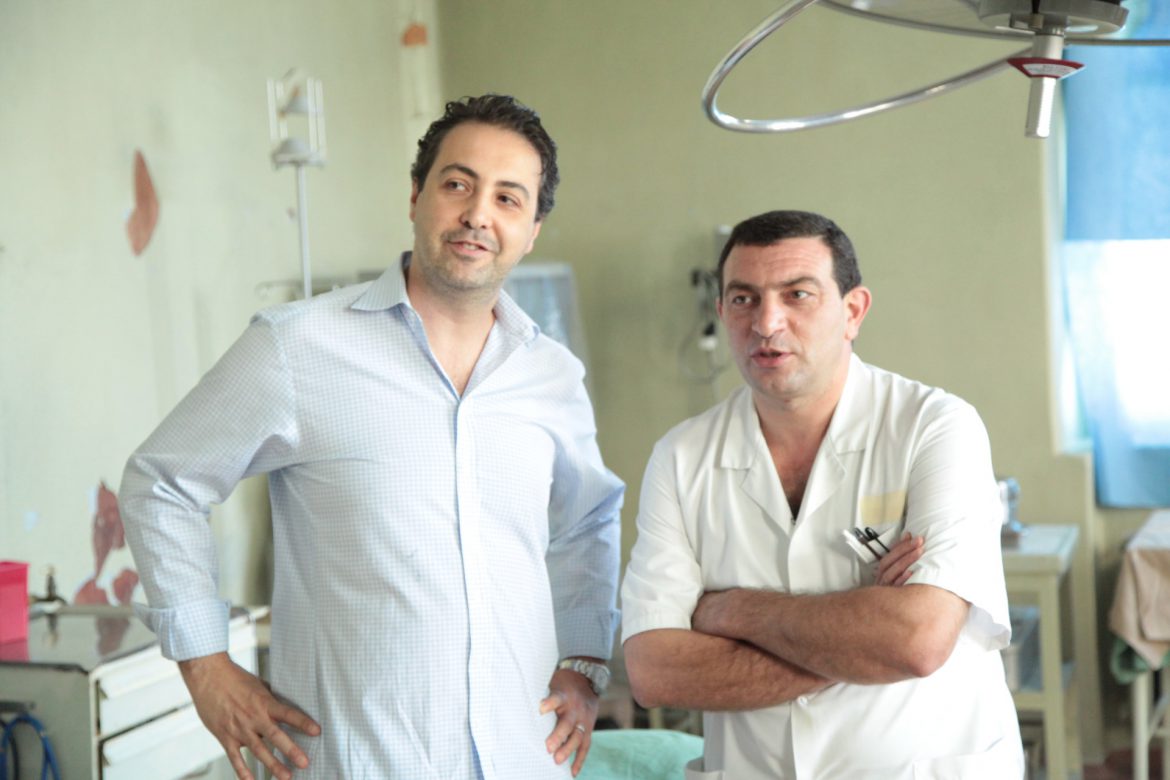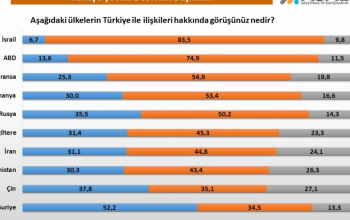By Levon Karamanoukian
When 79 year-old businessman Thomas T. went trout fishing in the Sierra Nevada mountains in California this summer, little did he realize that an exiled plastic surgeon from Artsakh Republic would be an instrumental part of his long reconstructive journey. Slipping on a slippery stone, Thomas fell into a remote river gorge and sustained a major head injury when a palm-sized piece of his scalp was lacerated.
Photo: Dr. Raffy Karamanoukian (left), and Dr. Igor Zakaryan (right)
“Thomas sustained a very deep injury to his scalp that exposed bone and skull tissue,” reports Dr. Raffy Karamanoukian, a Los Angeles-based plastic surgeon. “His initial triage in a smaller community hospital in Northern California only temporized the repair, but their reconstructive options were limited.” Upon his return to Los Angeles two days into his injury, Thomas was quickly evaluated by Dr. Karamanoukian and taken for immediate surgical debridement and first-stage tissue salvage.
Even after two successful attempts to repair the large scalp defect, Thomas’ traumatic injury began to lose precious blood supply, causing the skin, soft tissue, and muscle to lose vitality. As a result, Thomas’ wound became larger, exposing delicate cranial bone that provides the framework of the skull. As the patient lost hope for successful reconstruction, the injury became a race for time to prevent an infection from spreading to his body and brain. Within a few days, the palm-sized wound began to deteriorate rapidly.
That’s when Dr. Karamanoukian sought the expertise of several craniofacial and reconstructive plastic surgeons throughout Southern California. “The beauty of our national organization known as the American Society of Plastic Surgeons,” admits Dr. Karamanoukian, “is that its members are committed to interdisciplinary collaboration in difficult cases.” In total, Dr. Karamanoukian shared images with half a dozen associates to determine the best therapy for the patient.
Many of the surgical options were not particularly suited for an octogenarian, even one that was healthy and optimized for surgery. When Thomas consulted with an orthopedic surgeon, the expert had little hope that the exposed bone and devitalized tissue would regenerate without an intense 6-8 hour free tissue transplantation.
So Dr. Karamanoukian opted to contact Dr. Igor Zakharyan, Chief of Plastic Surgery at Central Republican Hospital in Stepanakert, Artsakh Republic. Dr. Zakharyan has over two decades of war experience in managing trauma-related injuries arising from the Republic of Azerbaijan’s continued aggression against the natives of Artsakh.
“There is no one that I know who is as knowledgeable about traumatic soft tissue head injuries than Dr. Zakharyan,” Dr. Karamanoukian adds, “…he has lived and worked through countless wars and battles.”
Exiled from Artsakh by Azerbaijan, Dr. Zakharyan currently lives in Yerevan pending the eventual return of indigenous Armenians back to their homeland in Nagorno Karabakh. Within hours, Dr. Zakharyan helped formulate a reconstructive protocol that is commonly used under the time-pressures of war. The solution: bioscaffold skin grafts from pig skin and sheep skin.
“Many of our soldiers with chemical burns inflicted by phosphorus bombs in 2023 were treated successfully with bioscaffold skin,” says Dr. Zakharyan, “these skin grafts reduced morbidity from these devastating injuries.”
Known as xenografts, the processed tissue is treated to remove any bioactive cellular remnants and acts as a scaffold for the tissue to grow and regenerate. The plan was to optimize tissue regeneration, even in exposed bone, in order to reduce inflammation, infection and need for more advanced microsurgery. Agreeing with Dr. Zakharyan’s approach, Dr. Karamanoukian placed a paper thin biocomposite skin graft made of acellular pig skin to help support the exposed bone on Thomas’ head.
“The composite skin seemed to be a ray of hope for an otherwise futile attempt at tissue salvage. We didn’t expect it to work on exposed bone,” says Dr. Karamanoukian.
Once the wound was stabilized with the bioscaffold skin graft, Dr. Zakharyan and Dr. Karamanoukian kept their fingers crossed. Nonetheless, they began to discuss a secondary salvage plan just in case the procedure failed.
Much to their collective surprise, “The bioscaffold reconstructive treatment was a complete success. Dr. Zakharyan helped provide a regimented approach to scalp reconstruction based on years of treating war-injuries in less than optimized conditions,” acknowledges Dr. Karamanoukian.
After one week of therapy, Dr. Karamanoukian was elated to find healthy tissue slowly growing into devitalized and exposed bone. Within two weeks, almost seventy percent of the devitalized tissue demonstrated significant improvement. In that short span of time, the wound began to exhibit signs of skin growth, a process that provided a solid inflection point for success. The rate of tissue revitalization was a cause for celebration among the surgical team and patient.
After close to six weeks, the final phase of reconstruction was completed and Thomas began to resume his normal quality of life. From a potentially life threatening injury to a fully epithelialized scar, the injury has left an indelible mark on both surgeon and patient. As for Dr. Zakharyan, in his usual stoicism, it’s just another tragic wound like so many others sustained in his native homeland of Artsakh. He patiently awaits a return to his forcibly abandoned home and homeland in Stepanakert so that he can resume the detailed work which he has spent decades perfecting.
Author’s note: There are many non-celebrated and unrecognized heroes that call Artsakh home. Dr. Igor Zakharyan is a national hero to the countless surgeons and patients who know him. We pay tribute to his expertise, his compassion, empathy, and unselfish desire to help others.




